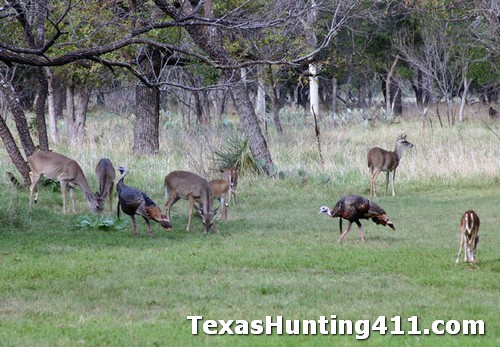Spring turkey hunting season can be fast and furious! The proper use of turkey decoy can take drastically increase success. I’ve used the standard hen, hen/jake and strutting tom decoys in the past, but the new MOJO Scoot-n-Shoot decoy looks like it could amp up my turkey hunting experience!
We’ve all been there. We set up our decoys and start yelping, only to have a big thunder chicken respond with a mighty gobble. Exciting! But after an hour of talking back and forth the reality is that the distance between you and the boss gobbler has not closed. He’s hung up or standing put. You have to go to him. Time to scoot over his way in position for a shot.
MOJO Outdoors just announced that their decoys made for the scoot-n-shoot style of turkey hunting are now available for purchase. I’ve seen this technique used before, but after watching the MOJO promo video I can’t help but go out and find one of these setups right now.
Video: Close-Range Turkey Hunting Action!
Scoot-N-Shoot Turkey Decoy
MOJO has absolutely REVOLUTIONIZED how we turkey hunt with the Scoot-N-Shoot style of hunting using the Scoot-N-Shoot and Tail Chaser Series of Decoys. Certainly the most exciting and arguably the most successful method of hunting long beard gobblers. They will come to run you off to protect their hens and their territory. It is their nature.
The new Scoot-N-Shoot is lighter and more compact for better mobility while you scoot in order to shoot. The new Tail Chaser is styled the Tail Chaser Max and has a bigger fan with realistic gobbler head on it, and a new mounting system to provide more site picture and to allow for optical sights. Also, comes with hub to accommodate a real fan.
MOJO has long been recognized as the company that revolutionized waterfowl, turkey, predator, and dove hunting with their constant innovation and from that has continued to lead the way bringing new and exciting products to the market place that change how we hunt. MOJO’s goal is to truly raise the bar, and their shop does some great work.

Spring Season
I love heading into the field in spring time. New-growth green makes trees, shrubs and grass vibrant again after a period of winter grays and browns. The spring season for turkeys also gives me yet another reason to get outside.
There is nothing more fun than getting a big gobbler within bow or shotgun range, whether it be bringing him in to you, or you going to get him. Spring turkey hunting season in just around the corner in Texas and I plan to give scoot-n-shoot a try this year. Can’t wait to get out there and make it happen!








